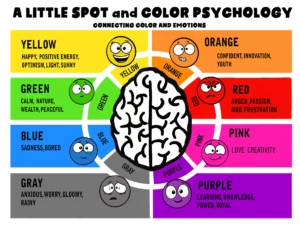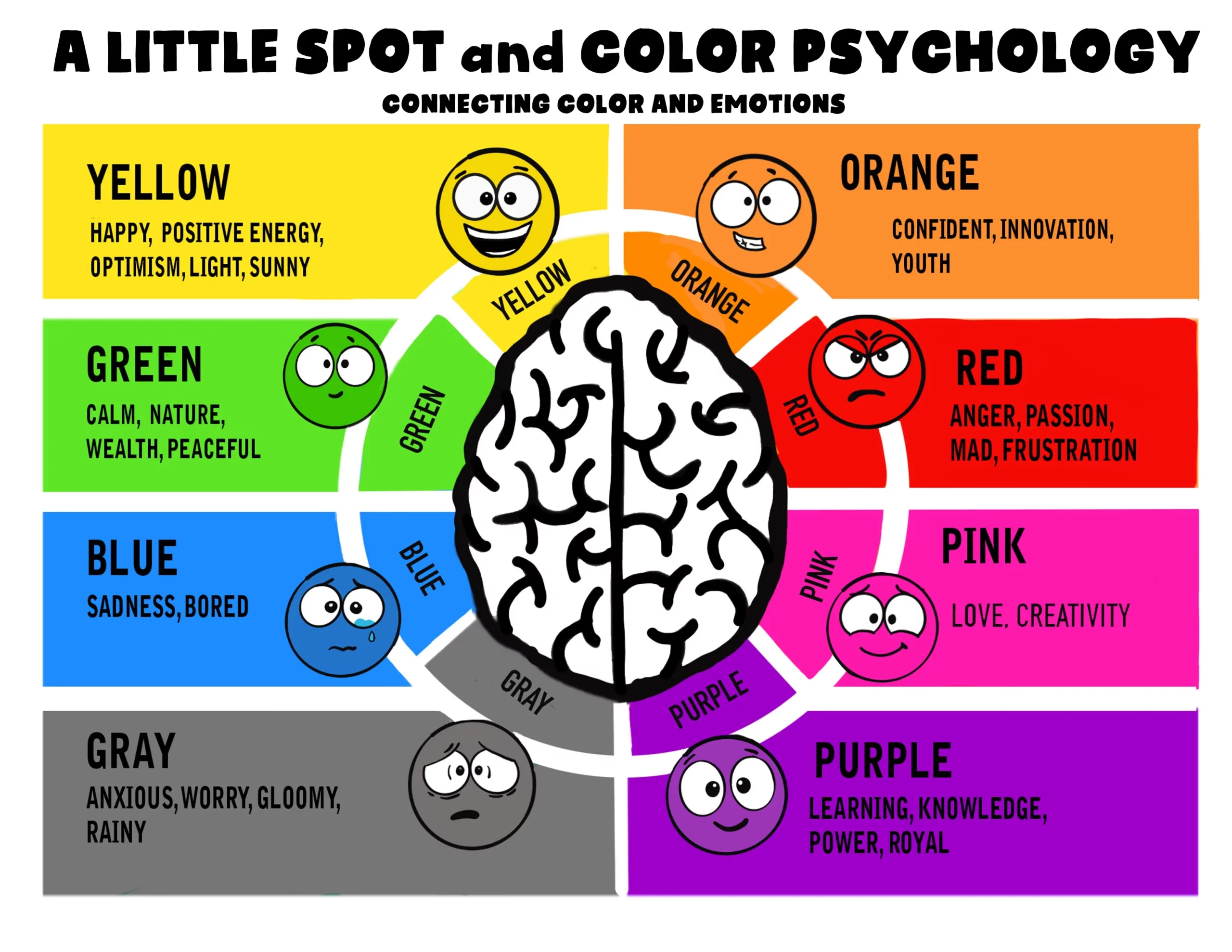Colors surround us every day, shaping our perceptions, influencing our moods, and even affecting our behavior. Color psychology refers to the study of how colors can influence our emotions. In this article, we’ll delve into the captivating world of color psychology and explore how various hues can have a profound influence on our emotional well-being and daily life.
The Power of Colors
To begin with, the impact of colors on human emotions and behavior has been a subject of fascination for centuries. Different colors evoke different feelings and responses. Therefore, let’s take a closer look at some common colors and the emotions they are often associated with:
Red
This color is often linked with strong emotions, such as love, passion, and anger. Moreover, it can raise our heart rate and energize us.
Blue
Blue is often associated with calm, tranquility, and stability. Hence, it has a soothing effect and can help reduce stress.
Yellow
Yellow is a color of joy, optimism, and warmth. Thus, it can boost creativity and increase feelings of happiness.
Green
Green is often linked with nature and growth. It can have a calming and rejuvenating effect.
Purple
Furthermore, purple is often associated with luxury, creativity, and spirituality. It can stimulate creativity and encourage deep thinking.
Orange
Orange is a color of energy and enthusiasm. It can be invigorating and motivating.
Black
Furthermore, people often associate black with sophistication and mystery, and it can also convey a sense of darkness and negativity.
White
It can create a sense of spaciousness and purity.

The Influence of Color in Everyday Life
Color psychology is not confined to aesthetics; it plays a significant role in various aspects of our daily lives:
Marketing and Branding
Businesses carefully choose colors for their logos and branding to evoke specific emotions and associations in consumers.
Interior Design
The colors used in homes and workplaces can impact our mood and productivity. For instance, designers frequently utilize warm colors like red and orange in dining areas to stimulate the appetite, while they employ cool colors like blue and green in bedrooms to establish a soothing atmosphere.
Fashion
Our clothing color choices can reflect our mood and personality. You can wear bright colors to convey energy and positivity, while opting for darker colors can create a more subdued and serious appearance.
Healthcare
Hospitals and healthcare facilities use colors to create a calming and reassuring atmosphere for patients.
Education
Color plays a role in the learning environment. Different colors can stimulate creativity, concentration, and memory.
Personal Interpretation of Colors
It’s essential to note that the impact of colors can vary from person to person. Cultural, personal, and even situational factors can influence how an individual perceives and reacts to specific colors. What’s most crucial is how a color makes you feel personally and how it aligns with your goals and intentions.
Using Color Psychology in Your Life
Understanding the basics of color psychology can help you make more informed choices in various aspects of your life. Here are some practical ways to apply color psychology:
Home DecorIn addition, consider the emotional impact of colors when choosing paint, furniture, and decor for your living space.
Clothing
Use color to express your mood and intentions through your clothing choices.
Productivity
To add on, use color in your workspace to boost productivity and creativity.
Branding
If you’re a business owner, think about the colors you use in your branding and marketing materials and how they align with your brand’s message.
Self-awareness
Pay attention to how specific colors make you feel and use that knowledge to enhance your well-being.
Conclusion
In conclusion, color psychology is a fascinating field that sheds light on the profound influence of colors on our emotions and behavior. Hence, by understanding the power of colors and using this knowledge to make intentional choices, you can create an environment that positively impacts your life and well-being. So, the next time you pick a color for your walls, clothing, or branding, consider the emotional message you want to convey and harness the incredible power of color to enhance your daily experiences.

